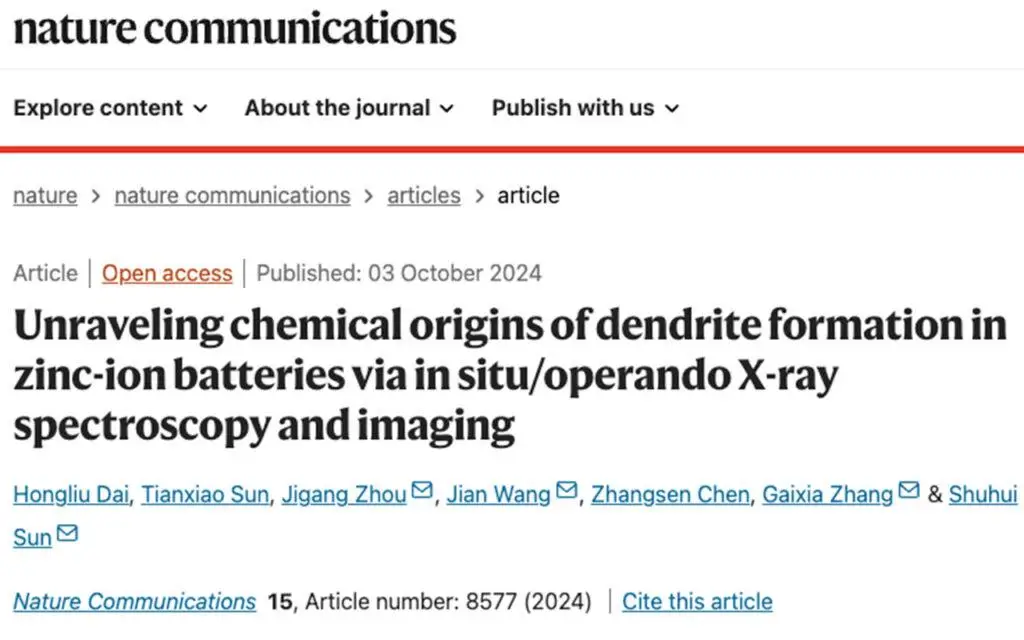A new study published in Nature Communications has shed light on the mechanisms of zinc dendrite formation in zinc-ion batteries and potential strategies to mitigate this issue. The research, conducted by an international team of scientists, utilized in situ scanning transmission X-ray microscopy (STXM) to investigate the relationship between zinc dendrite growth and the solid electrolyte interphase (SEI) film.
The study found that in a standard 50 mM ZnSO4 electrolyte, hydrogen evolution accelerates zinc dissolution and promotes dendrite formation with whisker and moss morphologies. These dendrites were primarily composed of zinc sulfate hydroxide (ZSH) and zinc oxide (ZnO).
The researchers discovered that the formation of a dense and stable SEI film is crucial for inhibiting zinc dendrite growth. To achieve this, they experimented with electrolyte additives. Adding 50 mM lithium chloride (LiCl) to the electrolyte resulted in the formation of a protective SEI film containing Li2S2O7, which significantly improved cycling stability from 46 hours to 138 hours.
Further improvements were observed with the addition of 5% 12-crown-4 to a 2 M ZnSO4 electrolyte. This modification enabled an impressive 3900 hours of stable cycling, compared to just 370 hours without the additive. The 12-crown-4 additive was found to enhance zinc ion transfer and promote uniform deposition.
The findings were supported by phase field simulations, which confirmed that suppressing ZnO byproduct formation is key to inhibiting dendrite growth.
This study demonstrates the potential of in situ STXM as a powerful tool for investigating battery mechanisms at the nanoscale. The insights gained could lead to the development of more efficient and longer-lasting zinc-ion batteries, which are considered a promising alternative to lithium-ion batteries for certain applications.
Reference: Dai, H., Sun, T., Zhou, J., Chen, Z., Wang, J., Zhang, G., & Sun, S. (2024). Unraveling chemical origins of dendrite formation in zinc-ion batteries via in situ/operando X-ray spectroscopy and imaging. Nature Communications, 15(1), 8577. https://doi.org/10.1038/s41467-024-52651-5
















